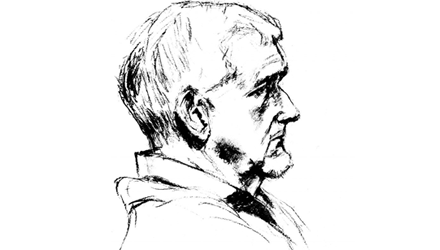The English or Shakespearian Sonnet.
Shakespeare was one of several early sixteenth century poets who developed the Italian Sonnet form into the version that become popular. The form often carries his name as his sonnets in this style have become the most famous in English literature.
The rhyme scheme is the determining factor in the fourteen lines of the sonnet. It usually carries a directional break, as in its Italian progenitor, between the octave and the sestet (first 8 and last 6 lines), and there is often another meaning turn between the 12th line and the final couplet. This turning point is often the main twist in the poem.
The poem is rhymed in quatrains for the first twelve lines to conclude with a couplet.
The rhyme scheme can be:
a-b-a-b
c-d-c-d
e-f-e-f
g-g
Below is a sonnet in Shakespearian form that I wrote when I was spending a year studying the Bard, and decided to try my hand.
Snapshot for a Sonnet
My ageing puts the world in shorter focus, (a)
events of previous import pass unnoticed, (b)
certainty no longer holds firm status, (a)
and memory works less smoothly unrehearsed. (b)
My eyesight still retains its long range vision, (c)
its interest with detail does not weary; (d)
valuing the colour or quick motion (c)
that separates the different from the dreary. (d)
So I thought, but shredding hoarded papers (e)
I found in jumbled snapshots of my wife (f)
that vibrancy and beauty never falter (e)
but habit mutes their presence in our life. (f)
Confident glances from a shared long past. (g)
Momentary connections, still holding fast. (g)
